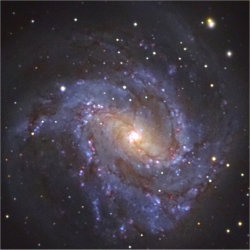The Big Crunch is one of the scenarios predicted by scientists in which the Universe may end. Just like many others, it is based on Einstein’s Theory of General Relativity. That is, if the Big Bang describes how the Universe most possibly began, the Big Crunch describes how it will end as a consequence of that beginning.
It tells us that the Universe’s expansion, which is due to the Big Bang, will not continue forever. Instead, at a certain point in time, it will stop expanding and collapse into itself, pulling everything with it until it eventually turns into the biggest black hole ever. Well, we all know how everything is squeezed when in that hole. Hence the name Big Crunch.
For scientists to predict with certainty the possibility of a Big Crunch, they will have to determine certain properties of the Universe. One of them is its density. It is believed that if the density is larger than a certain value, known as the critical density, an eventual collapse is highly possible.
You see, initially, scientists believed that there were only two factors that greatly influenced this expansion: the gravitational force of attraction between all the galaxies (which is proportional to the density) and their outward momentum due to the Big Bang.
Now, just like any body that goes against gravity, e.g. when you throw something up, that body will eventually give in and come back down for as long as there is no other force pushing it up.
Thus, that the gravitational forces will win in the end, once seemed like a logical prediction. But that was until scientists discovered that the Universe was actually increasing its rate of expansion at regions farthest from us.
To explain this phenomena, scientists had to assume the presence of an unknown entity, which they dubbed ‘dark energy’. It is widely believed that this entity is pushing all galaxies farther apart. With dark energy, and what little is known about it, in the picture, there seems to be little room for the possibility of a Big Crunch.
Right now, measurements made by NASA’s Chandra X-ray observatory indicate that the strength of dark energy in the University is constant. Just for added information, an increasing dark energy strength would have supported the possibility of a Big Rip, another universe ending that predicted everything (including atoms) to be ripped apart.
Even with an unchanging dark energy strength, an ever expanding universe is still the most likely scenario. So unless data that contradicts these properties are collected, the Big Crunch will have to remain as a less favored theory.
Articles on the big crunch are so hot. It’s a good thing we’ve got a nice collection of them here in Universe Today. Here are two of them:
Here are links from NASA about the big crunch:
Tired eyes? Let your ears help you learn for a change. Here are some episodes from Astronomy Cast that just might suit your taste:
Sources:
NASA
Wikipedia




